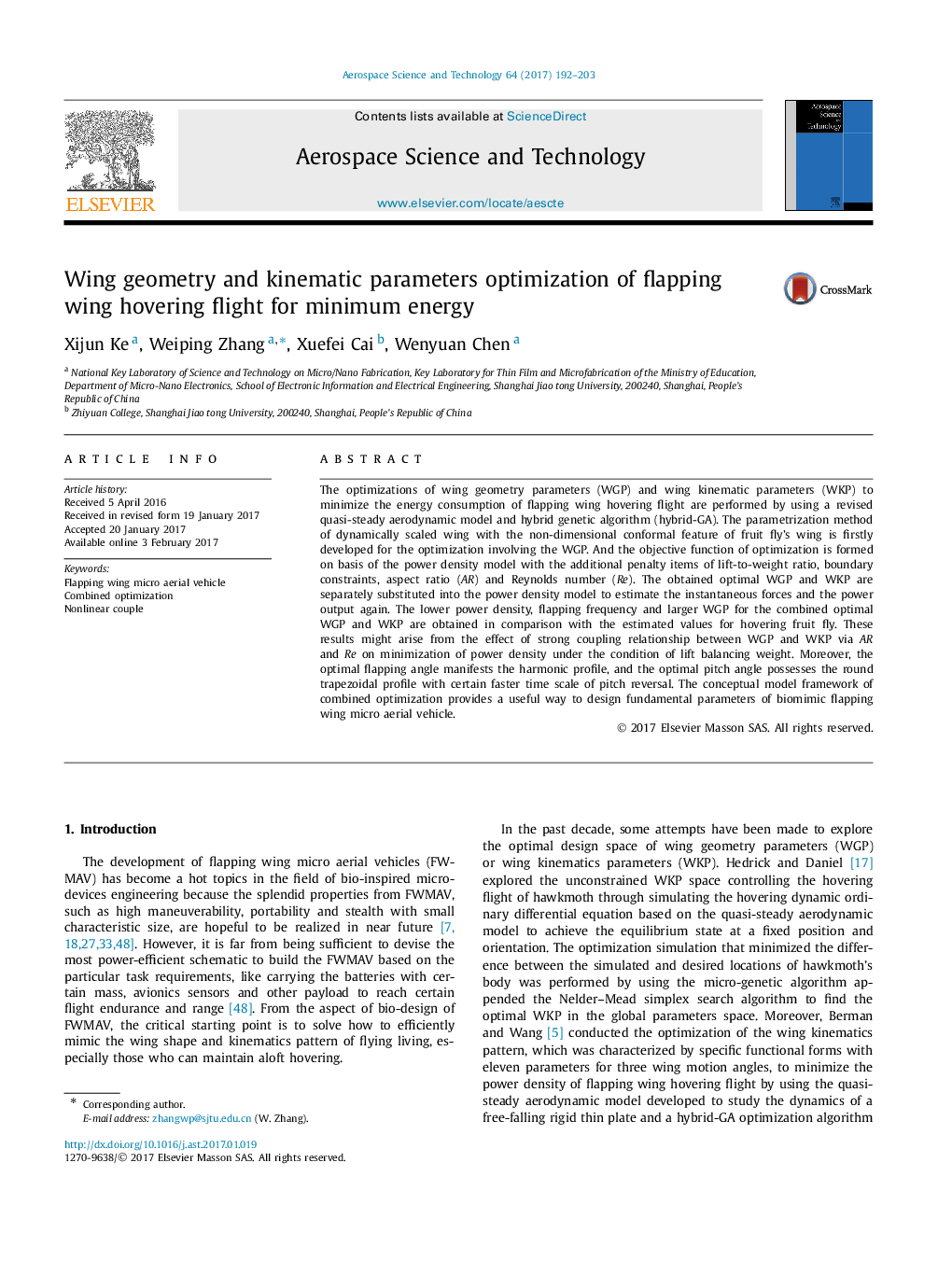| Article ID | Journal | Published Year | Pages | File Type |
|---|---|---|---|---|
| 5473016 | Aerospace Science and Technology | 2017 | 12 Pages |
Abstract
The optimizations of wing geometry parameters (WGP) and wing kinematic parameters (WKP) to minimize the energy consumption of flapping wing hovering flight are performed by using a revised quasi-steady aerodynamic model and hybrid genetic algorithm (hybrid-GA). The parametrization method of dynamically scaled wing with the non-dimensional conformal feature of fruit fly's wing is firstly developed for the optimization involving the WGP. And the objective function of optimization is formed on basis of the power density model with the additional penalty items of lift-to-weight ratio, boundary constraints, aspect ratio (AR) and Reynolds number (Re). The obtained optimal WGP and WKP are separately substituted into the power density model to estimate the instantaneous forces and the power output again. The lower power density, flapping frequency and larger WGP for the combined optimal WGP and WKP are obtained in comparison with the estimated values for hovering fruit fly. These results might arise from the effect of strong coupling relationship between WGP and WKP via AR and Re on minimization of power density under the condition of lift balancing weight. Moreover, the optimal flapping angle manifests the harmonic profile, and the optimal pitch angle possesses the round trapezoidal profile with certain faster time scale of pitch reversal. The conceptual model framework of combined optimization provides a useful way to design fundamental parameters of biomimic flapping wing micro aerial vehicle.
Related Topics
Physical Sciences and Engineering
Engineering
Aerospace Engineering
Authors
Xijun Ke, Weiping Zhang, Xuefei Cai, Wenyuan Chen,
